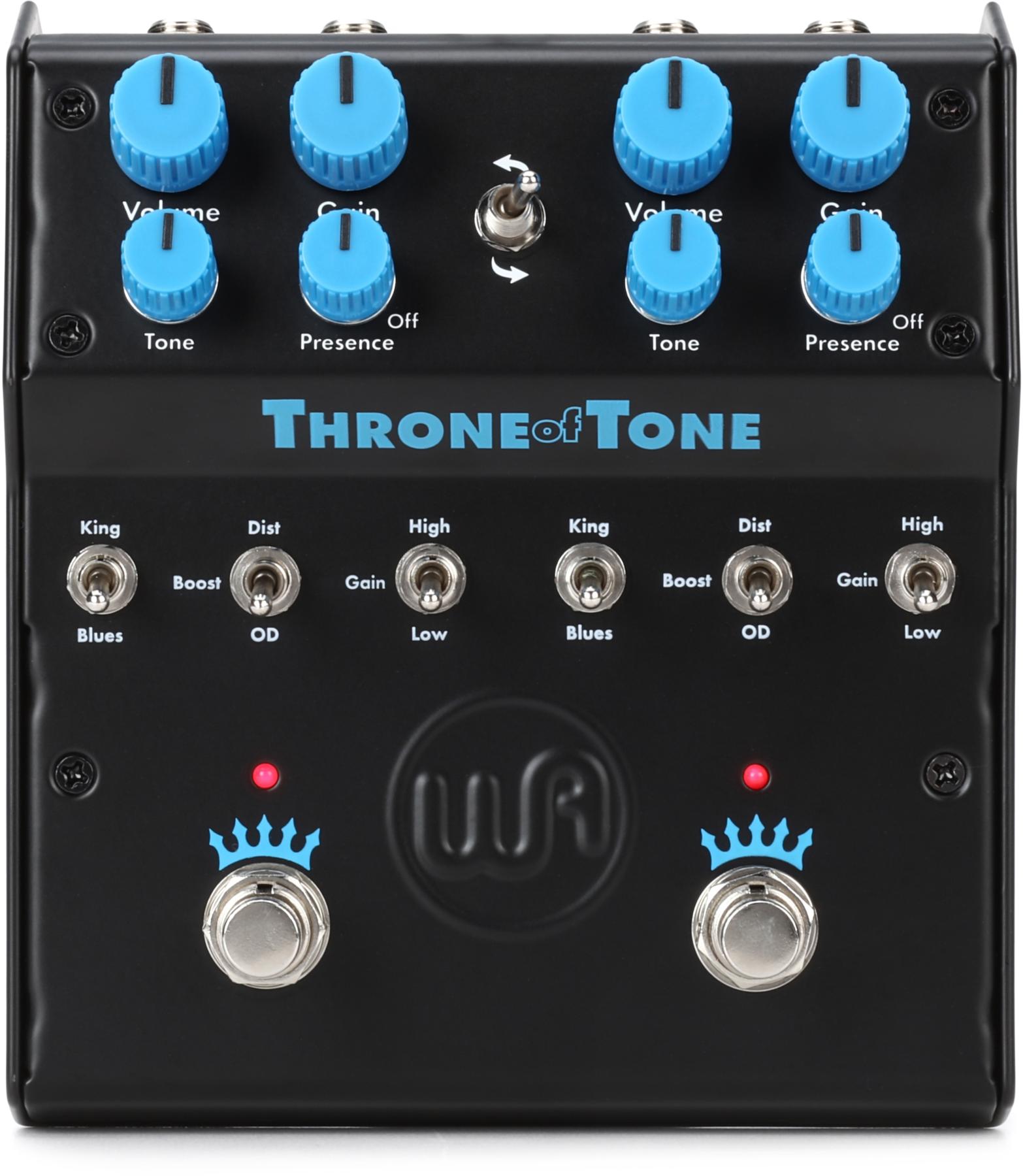Boss cultists covet the original VB-2 vibrato for its relative rarity. But unlike some Boss oddities that came up short on the musical side of the equation, the original VB-2 was ace—a striking and original sounding pitch wobbler that may not have successfully emulated a Leslie or unseated the ubiquitous CE-series chorus pedals as the ’80s stompbox modulator of choice, but became revered for deep, thick, and idiosyncratic pitch modulation.
Now it’s back, in a more flexible configuration, as part of Boss’s Waza Craft series, and it’s as wonderfully rich and quirky as ever.
Drunk on the Bucket Brigade
The introduction of the excellent DM-2W delay last year suggests that Boss tapped into a reliable source of mass-produced bucket brigade BBD chips. It’s likely the same source is responsible for the chips in the VB-2W—so this is, indeed, analog vibrato done the old fashioned (or at least the early ’80s) way. If that induces worry among any original VB-2 owners who grappled with that unit’s noisier tendencies, they need not fret. Like the DM-2W, the VB-2W is a very quiet circuit.
Apart from the relative silence, there are a few key differences between the Waza Craft version and the original VB-2. The Waza Craft version has a second jack on the right side of the pedal for an expression pedal, which controls the depth setting. There’s also a small, blink-and-you’ll-miss-it slider switch below the four knobs. It enables switching between the VB-2W’s “standard” voice (which replicates the original) and a “custom” setting, which is deeper, darker, and more intense. The four knobs are configured just as they would be on an original VB-2. The two leftmost knobs control rate and depth. A third controls rise time—the rate at which the modulation rises to full speed in latch mode. The fourth knob selects between latch mode, bypass mode (in which signal bypasses the bucket brigade chips entirely when the effect is off,) and unlatch mode, which enables momentary, press-and-release activation of the effect. Like just about any Boss stompbox, the VB-2W is stout, sturdy, and streamlined as a river stone (if not quite as curvaceous).
Tasty Pitch Tweaking
The original VB-2’s voice is deep, rich, and—at times—very in your face. Which is why it found favor among sonic anarchists like Nels Cline and Blur’s Graham Coxon. Those more extroverted qualities are very present in the VB-2W, although it’s also capable of subtlety.
If you’re not familiar with the VB-2 (or the vibrato effect in general), a great place to commence exploration of the VB-2W is in standard mode, with the rate and depth settings at noon. At these settings you hear the kind of modulation that you can really only extract from a true vibrato circuit. The modulation waves are neither as smooth nor as phase-shifty as a chorus, nor as organic as a rotating speaker. Instead it imparts a kind of throbbing—at times tremolo-like—sci-fi undulation that suggests the otherworldly and unnatural. Whether you find it heavenly or a sonic affront, it’s a sound the VB-2W delivers triumphantly.
Ratings
Pros:
Unique, rich, deep vibrato tones that are a great alternative to more familiar modulation textures. Expression pedal option. Quiet for an analog vibrato. Latch and unlatch modes. That brick-like Boss solidity.
Cons:
No expression pedal option for rate control.
Tones:
Ease of Use:
Build/Design:
Value:
Street:
$199
Boss VB-2W Waza Craft Vibrato
bossus.com
Where the Boss differs from digital pedals inspired by the VB-2 is in the beautiful darkening effect of the BBD circuit, which adds a very pretty, liquid—even vaporous—fade to the modulations as the waves dissipate in volume. The modulations also have a very pleasing harmonic balance and profile, favoring soft-contoured low-mid tones that, somewhat counter-intuitively, do not muddy dynamics significantly. Faster and increased modulation pulses may obscure picking detail, but at lower rates and intensities the VB-2W can be an interesting alternative to the same old sweeping Uni-Vibe-and-fuzz lead tone.
Pops Goes the Waza
Lower depth settings—between 8 and 10 o’clock—also give the VB-2w the feel of a somewhat queasy chorus, which is lovely for chords and arpeggios. (The deeper custom setting requires slightly lower depth settings to achieve the same effect.) At low enough levels, it’s the kind of effect you can leave on nearly all the time to add a little Pops Staples- or Creedence-style wiggle to your rhythm and lead parts.
Lower depth settings are also key to the VB-2W’s twist on a fast-rotary sound, which you can get with the rate around 1 to 2 o’clock and the depth at about 9. Again, the sounds are not entirely rotary-like, but they possess much of a rotary speaker’s dimensionality. The custom mode—and it’s intrinsic extra fatness—does apply an additional touch of whooshing authenticity to Leslie-like settings, particularly with a little tone attenuation from your guitar. It’s a killer sound for funky jazz chord vamping.
Extreme sounds are, of course, a VB-2 specialty, and the Waza version really extends the usefulness of the VB-2’s subtle-to-seasick range with the inclusion of the expression pedal option. The ability to sweep between subdued modulation washes and frantically pulsing movement can create the illusion of multiple or multi-tracked guitars in live situations. The same goes for the unlatch function, which can be used to emulate a vibrato arm flourish or stranger, intermittent texture shifts. The two functions alone—and the ways they work within the VB-2w’s range—make the pedal a texturalist’s dream. The only improvement I’d like to see is an option to control speed via the expression pedal as well.
The Verdict
The VB-2W isn’t for everybody. If you’re looking for classic chorus, Uni-Vibe, or rotary sounds, it will, at best, deliver reasonable facsimilies with a distinct VB-2 twist. If, however, you crave unconventional modulation colors and ’50s science fiction sonics, the VB-2w is a potentially indispensible bit of hardware.
Watch the Demo Review:








![Rig Rundown: Russian Circles’ Mike Sullivan [2025]](https://www.premierguitar.com/media-library/youtube.jpg?id=62303631&width=1245&height=700&quality=70&coordinates=0%2C0%2C0%2C0)


























